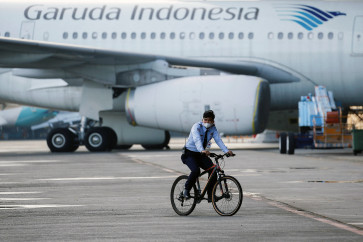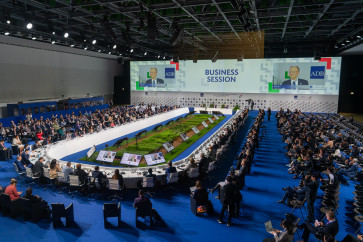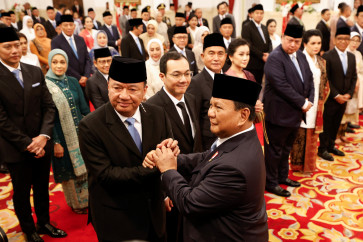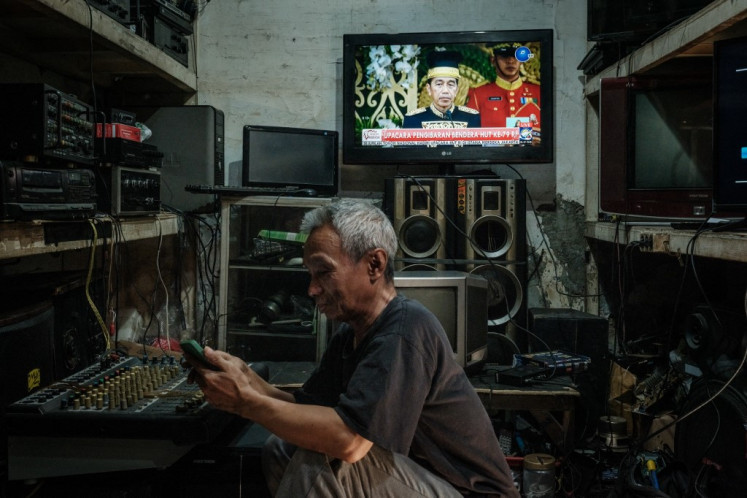WiMAX vs LTE: The battle continues
We all know that wireless is the way we will live in the future
Change text size
Gift Premium Articles
to Anyone

We all know that wireless is the way we will live in the future.
Every device will be connected with one another in wireless form. Of course, we will no longer be
satisfied with the Wi-Fi that is available today.
Even the newest version, the 802.11n, which has the data rate of up to sevenfold over the 802.11g, will not make us happy for long.
One of the reasons is that we produce and consume more and more content every day. We want to share the HD video that we have just made on Facebook.
YouTube has so much interesting content for us to watch on our smartphones or mobile devices. And then there will be connected devices to deliver healthcare to areas where medical doctors are
not available.
There is also the increasing need for bandwidth for personal security protection. The list goes on endlessly. That is why Ericsson has predicted that there will be 50 billion connections by 2020.
Wi-Fi is good for a limited distance, say 100 meters. The reality is that we are mobile. That is why
new technologies to shoot digital data are constantly invented. We have GPRS, Edge, WCDMA, HSPA and soon the 4G.
Two technologies are considered 4G nowadays. They are WiMAX and LTE. We have seen how they have been competing with one another. WiMAX is backed by giants like Intel Corp., Samsung and Motorola, while LTE has a lot more companies supporting it including Ericsson and Nokia. Even the roadmap of Qualcomm is directed toward FTD-LTE.
Until recently, we believed that, because it is highly unlikely that the WiMAX would topple LTE, at least it would survive as an alternative 4G technology.
There were reasons to think that it would. WiMAX is widely available in Taiwan, where a lot of WiMAX-based products are coming from its device powerhouses.
In the US, a company named ClearWire has been providing WiMAX services in a growing number of cities. In Russia, there have been moves led by Yota to provide nationwide WiMAX services.
However, during an informal conversation recently with John Stevanac, president SEA/Pacific at Qualcomm International, in Jakarta recently, it becomes apparent that we may have to rethink the future
of WiMAX.
This is especially so as the Indonesian government has auctioned the 2.3 gigahertz spectrum.
“ClearWire has indicated that it will switch over to LTE while Yota seems to prepare for the adoption of LTE, and this is the trend that we have seen in other places such as Latin America and India,” Stevanac said.
To add more blows to WiMAX, Alcatel-Lucent and Cisco are also moving away from WiMAX.
The May report of the WiMAX Forum (www.wimaxforum.org), in the meantime, says that the forum has tracked 598 WiMAX deployments in 148 countries.
However, they make it clear that the figure does not necessarily reflect the number of networks in
existence.
In Malaysia, according to a June 17 ZDNet article written by Edwin Yapp, there is also a debate on WiMAX versus the LTE. In the country, where the market for wireless broadband is booming, the WiMAX network is already in operation — provided by Packet One.
Meanwhile, the LTE is expected to become available in two years. However, there is a common perception among industry players that the LTE will eventually be the technology that prevails.
“The question is now would it make sense to go with a technology that is expected to grab a few million users by 2014 or with another technology that is already used by 1 billion users now?” asked Stevanac during our conversation.
Incidentally, exactly today — 28 June 2010 — First Media Tbk. will soft-launch the first WiMAX network in Indonesia through an operator called Sitra Wimax.
In Indonesia, eight companies won the WiMAX tender last year. However, two of them have withdrawn. It would not really be surprising that their decision is based also on their analysis of the viability of the technology.
Personally, I would still think that, although the worldwide market share of WiMAX is not going to grow as fast as it was first expected and that LTE will become the mainstream, will still have some hope. Let us not forget that Intel throws its weight behind WiMAX.
Just imagine if Intel, the world’s largest supplier of processors for personal computers, comes up with a new specification — akin to the Centrino — then combines the chipset for its processors with a built-in WiMAX module.
This will have a huge impact on the industry. Remember that Intel is also producing processors for small Internet devices, too.
By the way, Stevanac also reminded me that Qualcomm has created chipsets that support multiple access technology.
While no commercial products are available yet, in the future we may be able to use the same mobile device — smartphone, tablets and netbooks — to access networks based on LTE, WCDMA and EV-DO, or any combinations thereof.
At any rate, the future promises even more flexibility. For now, let us see how First Media’s Sitra Wimax will be doing.
Wi-Fi is good for a limited distance, say 100 meters. The reality is that we are mobile. That is why
new technologies to shoot digital data are constantly invented.









